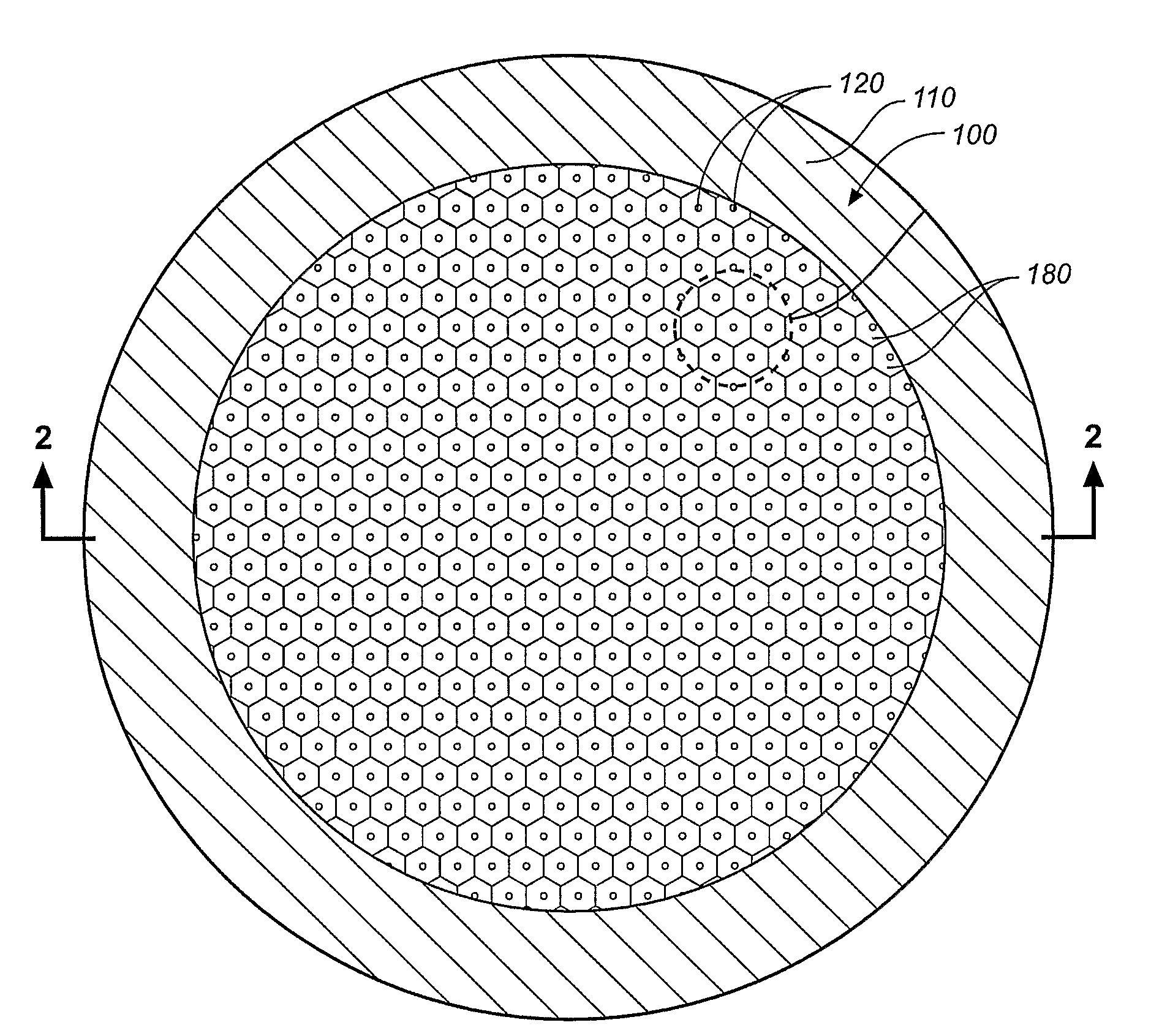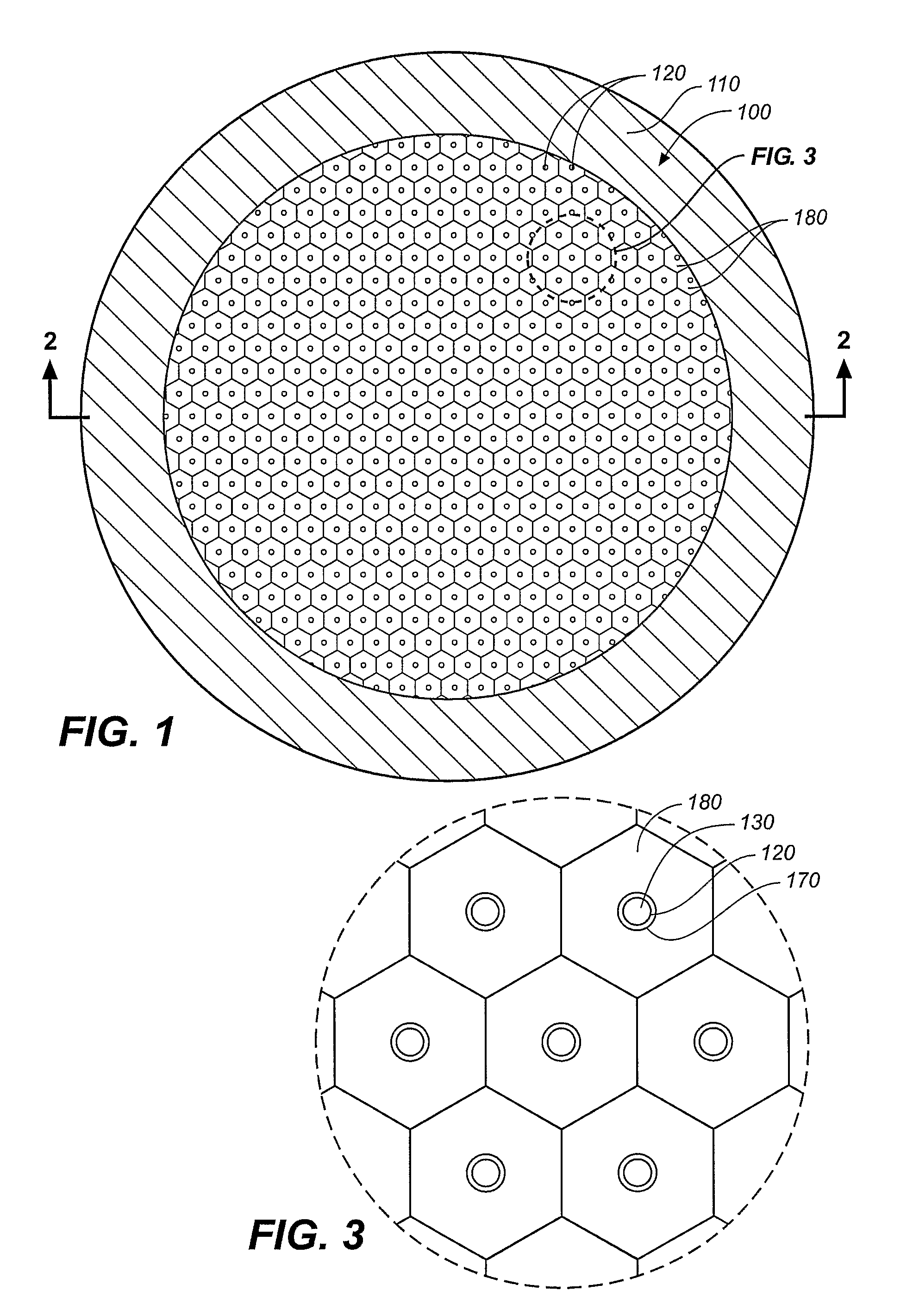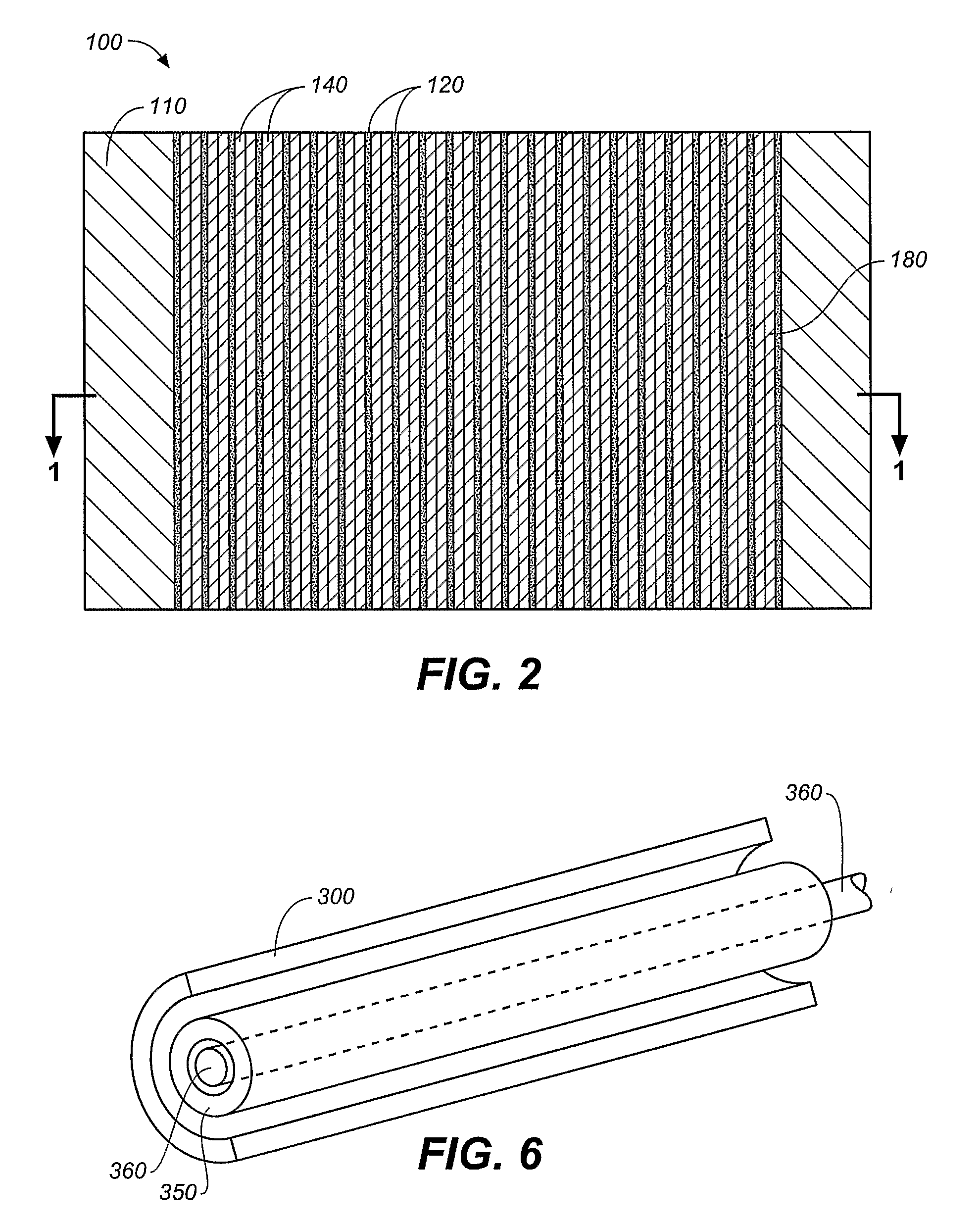Non Proliferating Thorium Nuclear Fuel Inert Metal Matrix Alloys for Fast Spectrum and Thermal Spectrum Thorium Converter Reactors
- Summary
- Abstract
- Description
- Claims
- Application Information
AI Technical Summary
Benefits of technology
Problems solved by technology
Method used
Image
Examples
example one
Operating Range 350-450 Degrees C.
[0106]Fast Spectrum: inert metal matrix 17.5%-60% matrix alloy, balance actinide ceramic; fissile: U 235 22% to 24%+ / −50%, U 233 10%-12%+ / −50%, reactor grade pu 20%-24%+ / −50%; Fertile: thorium 232 balance; aluminum 25%-50%, nickel 25%-50%, vanadium 10-20%, zirconium 10-20%, boron 11 100-200 ppm, hydrogen 10-1000 ppm + / −15%, or deuterium in twice the concentration. Actinide ceramics with lanthanide ceramic such as 0.1%-2% erbium oxide for reactivity control, proactinium oxide in amounts as needed for reactivity control and to produce uranium 232 denaturant. Reactor grade plutonium ceramic 21.5%+ / −50% with corresponding thorium ceramic balance; or uranium 233 ceramic 11.5%+ / −50% with corresponding thorium ceramic balance; or uranium 235 ceramic 23%+ / −50% with corresponding thorium ceramic.
[0107]Intermediate epithermal spectrum: inert metal matrix 15%-55% matrix, balance actinide ceramic; aluminum 25%-45%, nickel 5%-35%, vanadium 5%-10%, zirconium 25%-...
example two
Operating Range 450-550 Degrees C.
[0109]Fast spectrum: inert metal matrix 17.5%-57.5% matrix alloy, balance dispersed actinide ceramic. Aluminum 25%-45%, nickel 35%-55%, vanadium 10%-15%, zirconium 15%-25%, boron 11 100-200 ppm, hydrogen 10-1000 ppm + / −15%, or deuterium in twice the concentration. Actinide ceramics: reactor grade plutonium ceramic 21.5%+ / −50% with corresponding thorium ceramic balance; or uranium 233 ceramic 11.5%+ / −50% with corresponding thorium ceramic balance; or uranium 235 ceramic 23%+ / −50% with corresponding thorium ceramic.
[0110]Intermediate epithermal spectrum: inert metal matrix 15%-55% matrix, balance actinide ceramic. Aluminum 25%-45%, nickel 25%-30%, vanadium 2.5%-12.5%, zirconium 35%-55%, boron 11 100-200 ppm, hydrogen 100-10,000 ppm + / −25% or deuterium in twice the concentration. Actinide ceramic same as above.
[0111]Thermal spectrum: aluminum 25%-45%, nickel trace −0.25%, vanadium 10%-25%, zirconium 35%-65%, boron 11 trace, phosphorus trace, hydrogen 1...
example three
Operating Range 550-650 Degrees C.
[0112]Fast spectrum: inert metal matrix 17.5%-57.5% matrix alloy, balance dispersed actinide ceramic. Aluminum 15%-35%, nickel 25%-45%, vanadium 2.5%-15%, zirconium 30%-55%, boron 11 100-200 ppm, hydrogen 10-1000 ppm + / −15%, or deuterium in twice the concentration. Actinide ceramics. Reactor grade plutonium ceramic 21.5%+ / −50% with corresponding thorium ceramic balance; or uranium 233 ceramic 11.5%+ / −50% with corresponding thorium ceramic balance; or uranium 235 ceramic 23%+ / −50% with corresponding thorium ceramic.
[0113]Intermediate Epithermal Spectrum: inert metal matrix 15%-55% matrix, balance actinide ceramic. Aluminum 25%-35%, nickel 25%-30%, vanadium 2.5%-12.5%, zirconium 45%-65%, boron 11 100-200 ppm, hydrogen 100-10,000 ppm + / −25%, or deuterium in twice the concentration. Actinide ceramic same as above.
[0114]Thermal Spectrum: aluminum 15%-35%, nickel trace −2.5%, vanadium 10%-25%, zirconium 35%-65%, boron 11 trace, hydrogen 1000-100,000 ppm, ...
PUM
| Property | Measurement | Unit |
|---|---|---|
| Temperature | aaaaa | aaaaa |
| Metallic bond | aaaaa | aaaaa |
| Energy | aaaaa | aaaaa |
Abstract
Description
Claims
Application Information
 Login to View More
Login to View More - R&D
- Intellectual Property
- Life Sciences
- Materials
- Tech Scout
- Unparalleled Data Quality
- Higher Quality Content
- 60% Fewer Hallucinations
Browse by: Latest US Patents, China's latest patents, Technical Efficacy Thesaurus, Application Domain, Technology Topic, Popular Technical Reports.
© 2025 PatSnap. All rights reserved.Legal|Privacy policy|Modern Slavery Act Transparency Statement|Sitemap|About US| Contact US: help@patsnap.com



